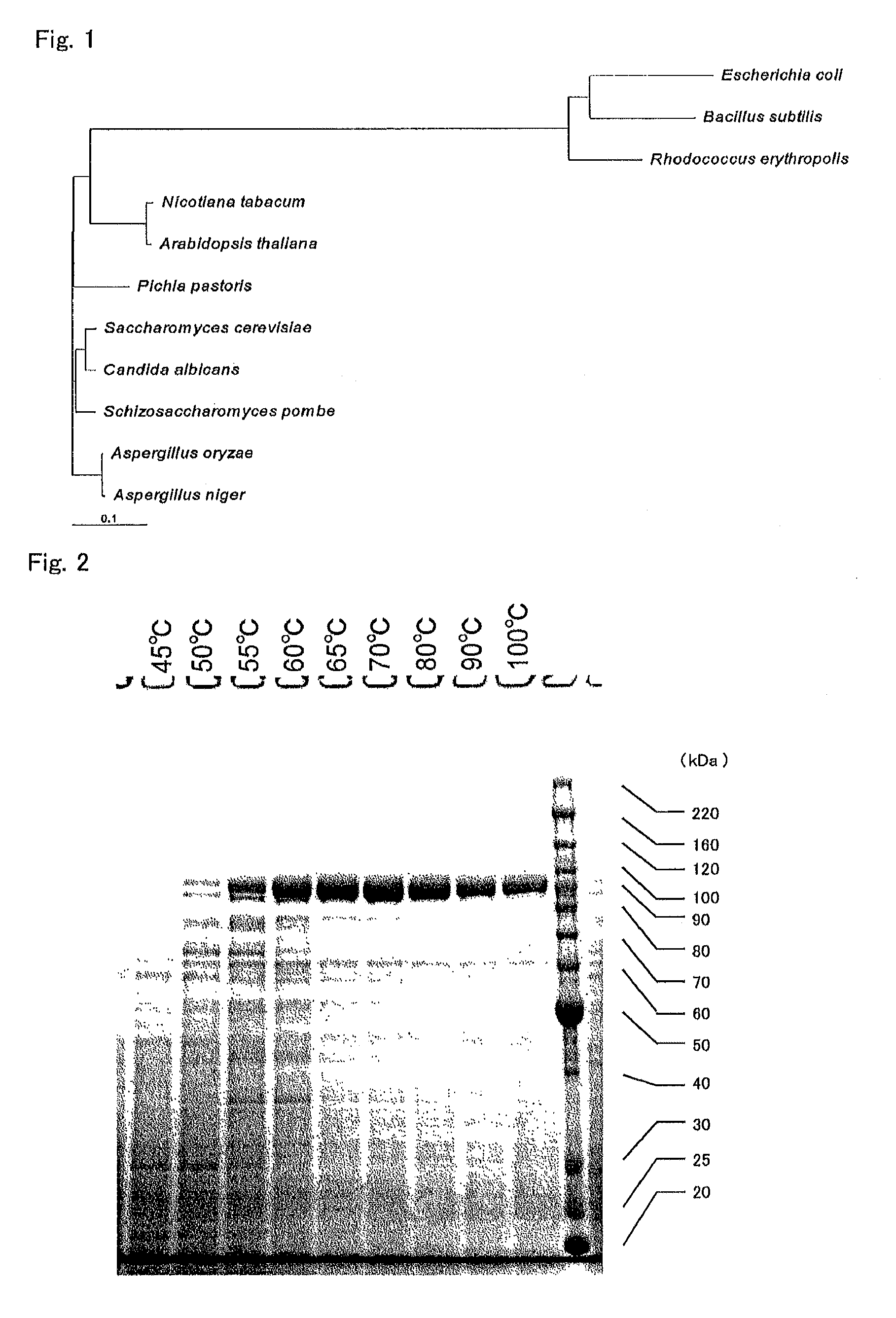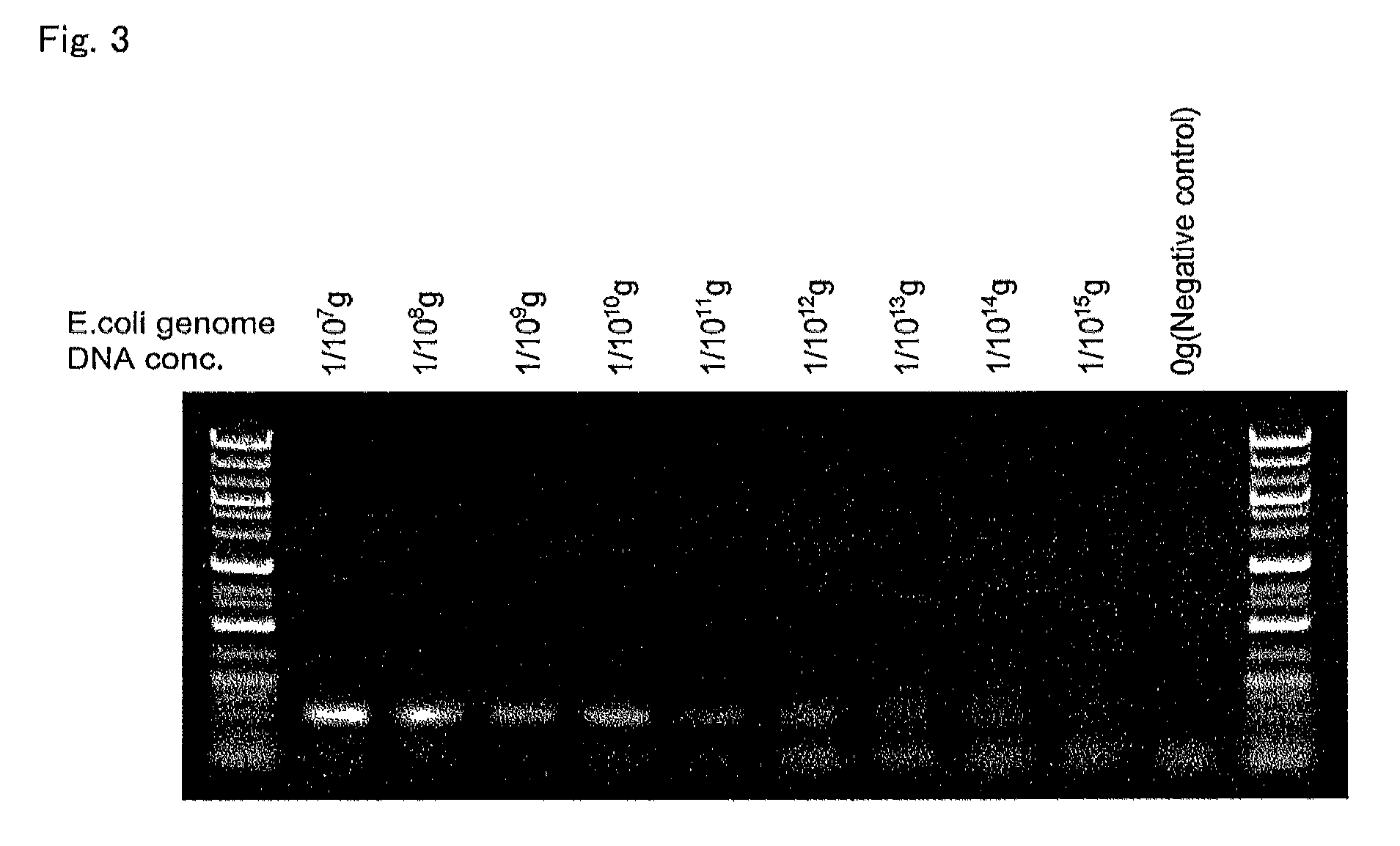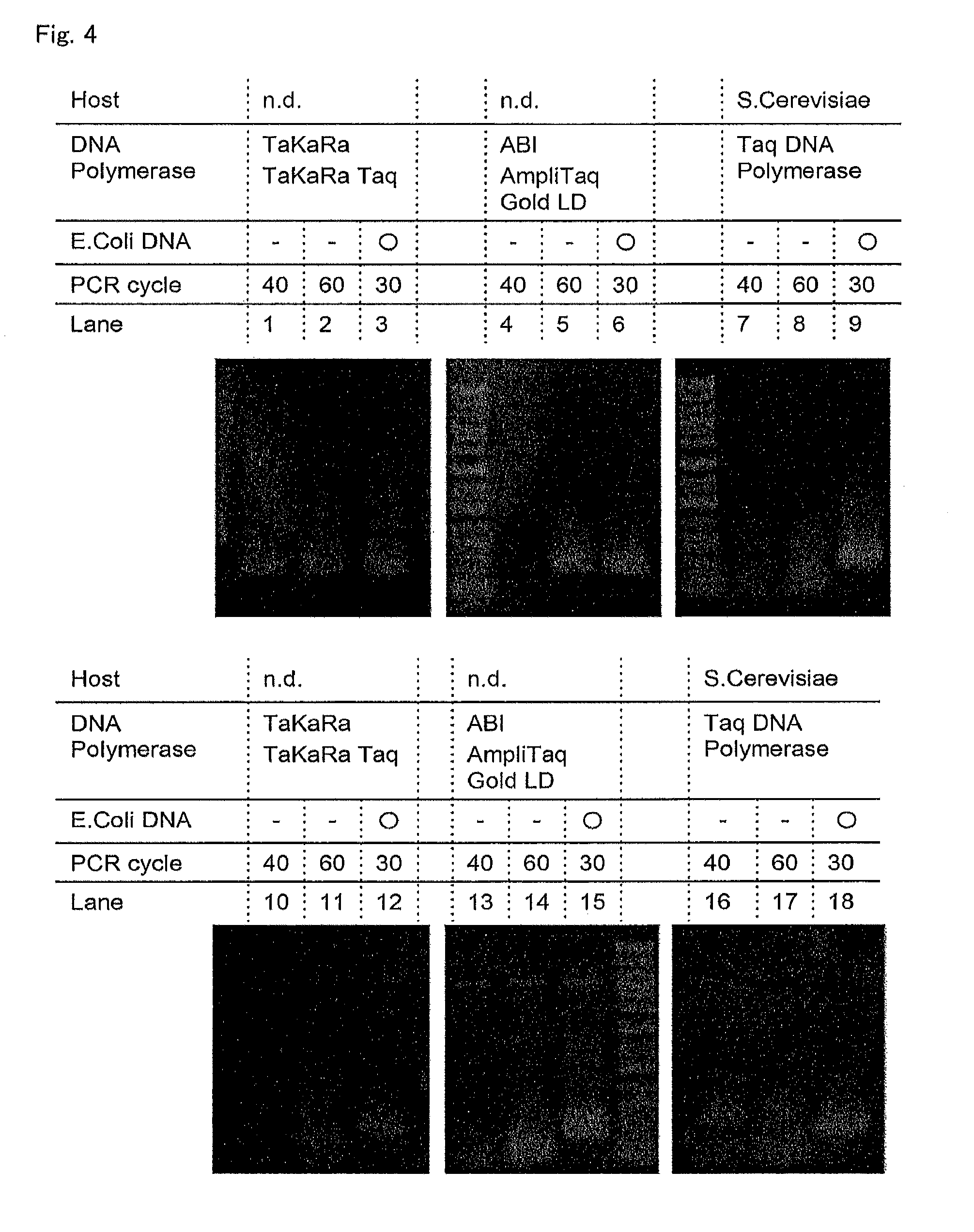Enzyme preparation containing thermostable DNA polymerase, method for producing same, and method for detecting subject organism to be detected
a technology of thermostable dna and enzymes, which is applied in the direction of enzymology, enzymology, biochemistry apparatus and processes, etc., can solve the problems of reducing the detection efficiency of fetuses with intrauterine infection, requiring rapid detection, and reducing the detection efficiency of fetuses, so as to eliminate the risk of false positive, reduce the production cost, and reduce the sensitivity
- Summary
- Abstract
- Description
- Claims
- Application Information
AI Technical Summary
Benefits of technology
Problems solved by technology
Method used
Image
Examples
example 1-1
[0492](1) Synthesis of DNA
[0493]Complete DNA sequence of T. aquatics-derived thermostable DNA polymerase was synthesized at GenScript. At this time, the codon sequences were optimized for a yeast host, S. cerevisiae. The synthesized DNA was incorporated into a plasmid pUC57 provided from GenScript, and thus a vector pUC-TA01 was obtained. The gene encoding thermostable DNA polymerase was designed such that a HindIII restriction enzyme site was introduced into the 5′ terminal sequence and an EcoRI restriction enzyme site was introduced into the 3′ terminal sequence.
[0494](2) Construction of Vector for Expressing T. aquatics-derived Thermostable DNA Polymerase
[0495]The synthesized gene encoding T. aquatics-derived thermostable DNA polymerase was inserted into plasmid pYES2 (Invitrogen) so as to construct a vector pYES-TA01. For the gene encoding the thermostable DNA polymerase, the pUC-TA01 was digested with the restriction enzymes HindIII and EcoRI (TaKaRa Bio), which was subjected t...
example 2
Quantification Identification A by Non-display Method
[0586]Hereinafter, T. aquaticus-derived thermostable DNA polymerase produced by using host S. cerevisiae is referred to as “e-DNAP”.
[0587]By using the above-obtained e-DNAP, quantification identification of a sample by the non-display method was tried. The real-time PCR was carried out in a system whose total amount was 20 μL by using real-time PCR machines LightCycler 1.5 (Roche Diagnostics K.K.) and RotorGene 6000 (QIAGEN) and a reagent for real-time PCR by the following constitution by using the below-mentioned universal primers for detecting bacteria.
[0588]
Forward Primer:CTCCTACGGGAGGCAG(SEQ ID NO: 43)Reverse Primer:ACTACCAGGGTATCTAATCCTG(SEQ ID NO: 44)[0589]e-DNAP (5 units / μL): 1 μL,[0590]E. coli genomic DNA template or Water PCR grade: 2 μL,[0591]SYBR Green I (TAKARA) 300-folded diluent: 2 μL,[0592]PCR primers (10 μM): 0.8 μL each,[0593]10× Buffer (500 mM KCl, 100 mM Tris-HCl): 2 μL,[0594]25 mM MgCl2: 1 μL,[0595]2 mM dNTP mi...
example 3
Quantification Identification B by Non-display Method
[0604]By using the e-DNAP and the non-display method in accordance with the present invention, infectious bacteria and fungi which were present in various samples were tried to be quantified and identified. A real-time PCR reagent for detecting bacteria and the primer constitution were the same as in Example 2. This Example was carried out in the same manner as in Example 2 except that a real-time PCR reagent for detecting fungus and the primer constitution were as follows: an rTaq DNA polymerase (ToYoBo) was used as a thermostable DNA polymerase produced by using bacteria as a host, and the below-mentioned universal primer for detecting fungi was used.
[0605]
Forward Primer:GAATGAGTACAATGTAAATACCTTAACG(SEQ ID NO: 9)Reverse Primer:GCTTTCGCAGTAGTTAGTCTTCA(SEQ ID NO: 45)
[0606]Since CFU / ml is usually used as the unit of the concentration of the infectious bacteria / fungi, in order to allow the unit to match to that for the PCR quantific...
PUM
| Property | Measurement | Unit |
|---|---|---|
| time | aaaaa | aaaaa |
| Tm | aaaaa | aaaaa |
| Tm | aaaaa | aaaaa |
Abstract
Description
Claims
Application Information
 Login to View More
Login to View More - R&D
- Intellectual Property
- Life Sciences
- Materials
- Tech Scout
- Unparalleled Data Quality
- Higher Quality Content
- 60% Fewer Hallucinations
Browse by: Latest US Patents, China's latest patents, Technical Efficacy Thesaurus, Application Domain, Technology Topic, Popular Technical Reports.
© 2025 PatSnap. All rights reserved.Legal|Privacy policy|Modern Slavery Act Transparency Statement|Sitemap|About US| Contact US: help@patsnap.com



